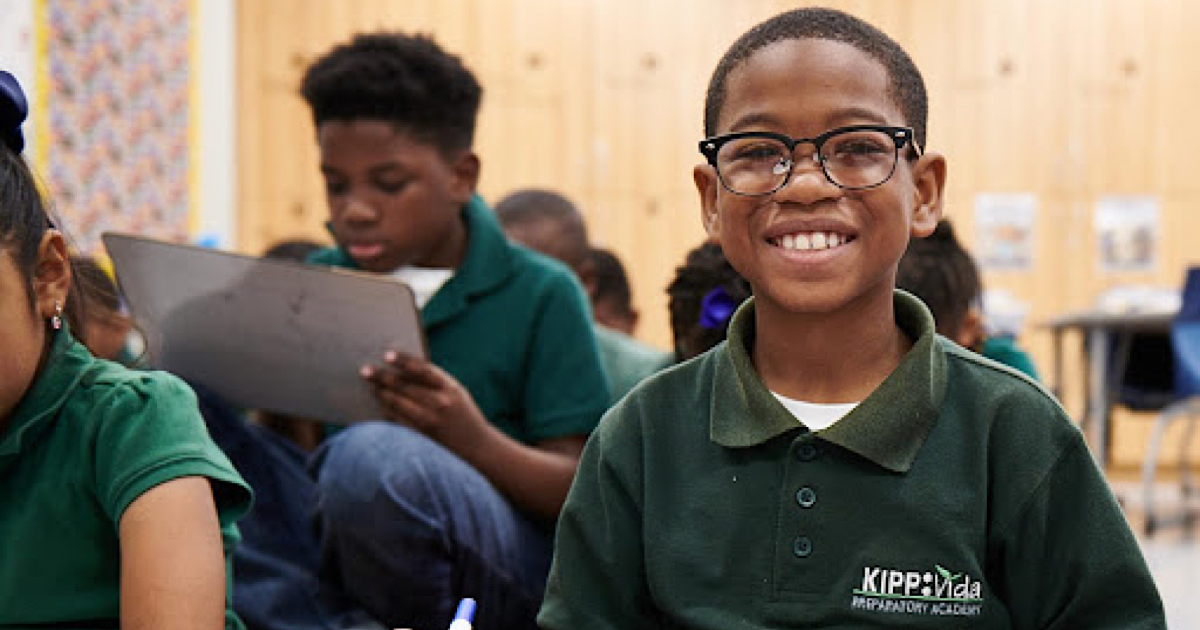
May 8, 2023 5:03:29 PM
by Brandon Best
It’s pretty difficult to understate the importance of community involvement in schools.
At KIPP, when we talk about “Family and community engagement in school,” we’re talking about schools, families, and other stakeholders in the community sharing knowledge and information with each other. The purpose of that kind of engagement is straightforward: We want to make decisions that improve outcomes for students.
Engaging families in education and building a strong school-community partnership is a strategy that establishes credibility and trust by using consistent two-way messaging. It’s also the only way to actually build a school with the community as opposed to simply building a school in a community.
Communities won’t do business with people they don’t trust, and it’s no different with schools. Trust can’t be manufactured. It isn’t a transactional process. For communities to trust you, they need to be assured that they are dealing with teachers and school leaders who keep the best interests of the students and communities at the heart of what they do.
As you begin the process of starting your school, or building a community engagement strategy for your existing school, here are five ways to build community engagement in schools.
Roadmaps allow for clear articulation of strategy, while providing team members with the destination and steps needed along the way. Here are a few questions to consider when creating your roadmap:
Create an advisory board made up of key community members who can provide ongoing feedback and guidance throughout the school’s development and operations.
Organize meetings within the community where residents can share their opinions and ideas about what the school should be. This will ensure that the school reflects the values and needs of the community. Be mindful, hosting the session is only part of the solution; making sure the community is aware and present is another. When planning your sessions be sure to consider the following:
When building a school, you want to make sure you’re doing it with the community, not simply in it. One of the easiest ways to gather information about the community’s values and desires is to knock on doors, stand outside grocery stores, or go wherever the community meets and conduct surveys. This information could shape the school’s mission, curriculum, and programs. This will foster effective communication between schools and families.

Partner with community organizations to bring new resources that everyone can enjoy regardless of whether their child attends the school.
You’ll know you’re succeeding if you hear two people having a conversation like this:
Jessica: “Oh, your child goes to Community School XYZ? My kid doesn’t attend that school, but we go to their farmer’s market almost every Saturday. I really like what they’re doing over there.”
Mark: Me too! I just went to a job fair over there last week. They set it up in the school lunchroom. There must have been 50 local businesses there recruiting.
As you continue to think through ways to build schools with your community, remember to create real community engagement to deepen your relationships with the families and communities you serve. That’s the only way you will become a community school and not just another school in the community.
Brandon Best is Senior Director of Regional Advocacy at KIPP Foundation. Connect with him on LinkedIn.
Few issues in education spark more tension and debate than standardized testing. Are they a tool for equity or a burden on students? A necessary check on school systems or a flawed measure of...
Charter schools are public schools with a purpose. Operating independently from traditional school districts, they're tuition-free, open to all students, and publicly funded—but with more flexibility...
Despite the benefits of a diverse teaching force, prospective teachers of color fall out of our leaky preparation pipeline at every stage: preparation, hiring, induction, and retention. Here’s what...
Ed Post is the flagship website platform of brightbeam, a 501(c3) network of education activists and influencers demanding a better education and a brighter future for every child.
© 2020-2025 brightbeam. All rights reserved.
Leave a Comment